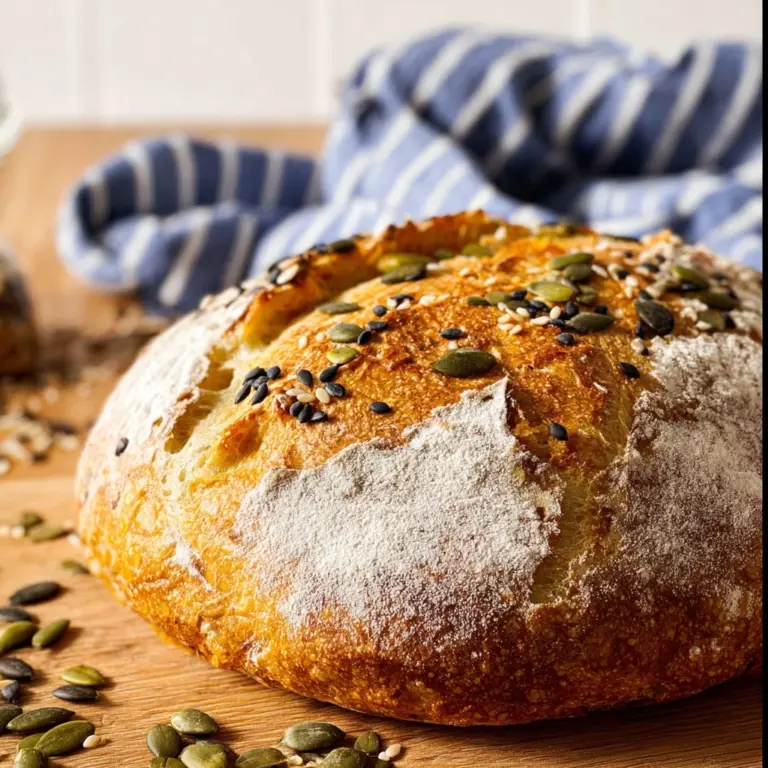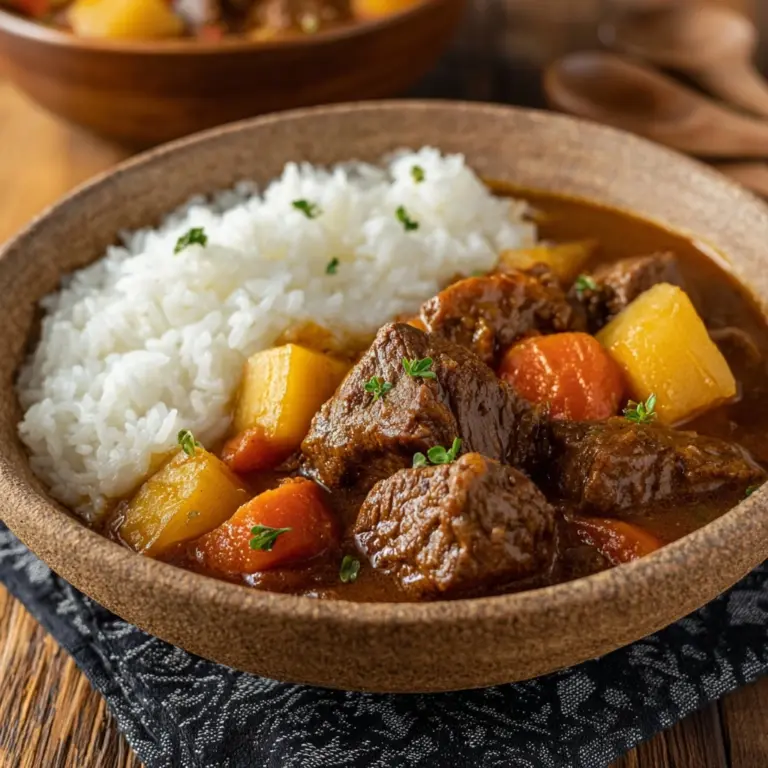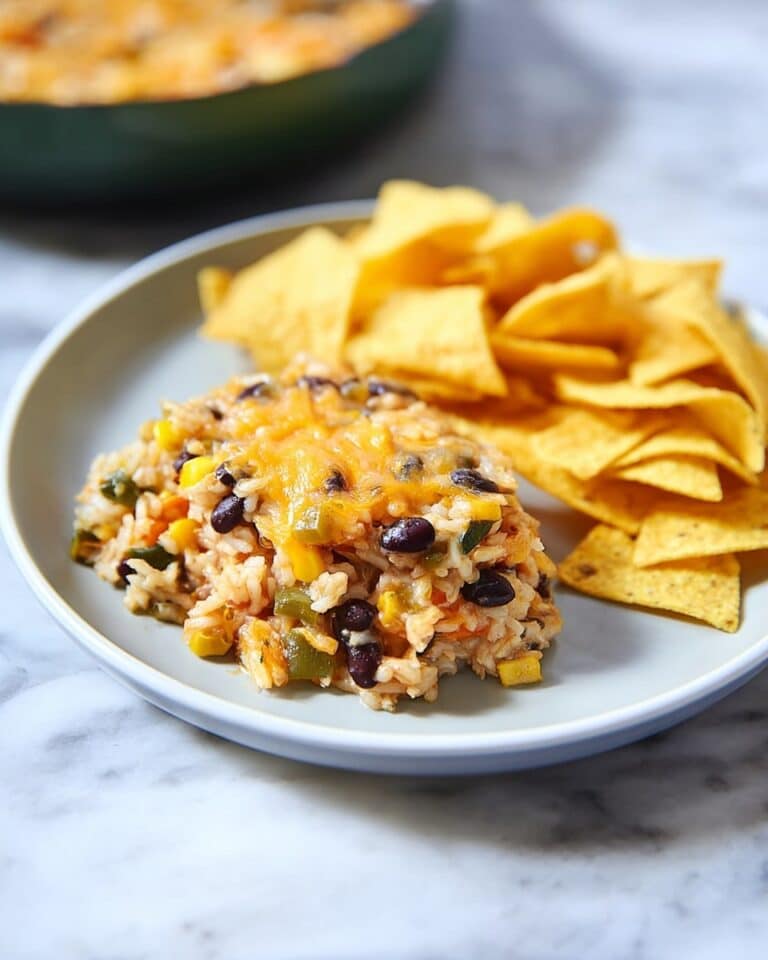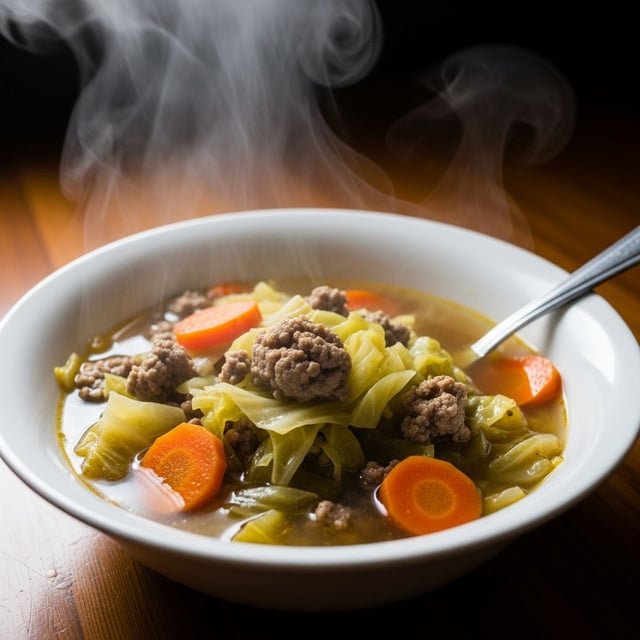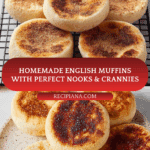Homemade English Muffins Recipe
If you have ever bitten into a perfectly warm, fluffy, and slightly chewy English muffin, you know how utterly delightful they are. But have you tried making your own? These Homemade English Muffins bring all the magic of that classic bakery treat right into your kitchen. With their signature nooks and crannies ready to catch pools of butter and jam, they are incredibly satisfying and surprisingly easy to create from scratch. Whether for an indulgent breakfast or a scrumptious snack, these muffins promise a fresh, flavorful experience that store-bought versions just can’t match.
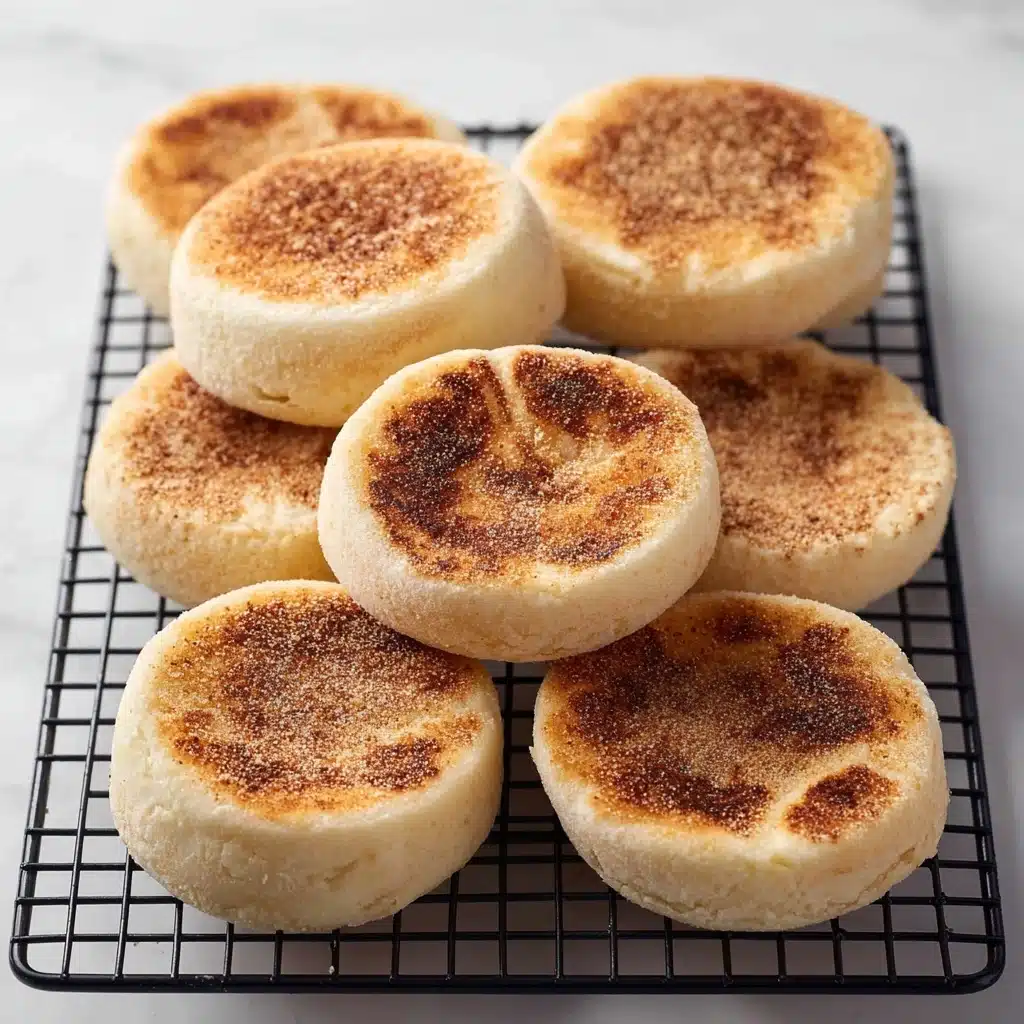
Ingredients You’ll Need
This recipe uses simple, everyday ingredients that work together to create the perfect texture and taste. Each component plays a vital role, from enriching the dough to giving the muffins their characteristic crumb and golden color.
- Active dry yeast (2 1/4 teaspoons): The key to that airy rise and fluffy texture, yeast brings your dough to life.
- Warm water (1/4 cup): Activates the yeast and helps ensure a good proof for a light dough.
- Granulated sugar (2 tablespoons): Balances flavor and fuels the yeast for a steady rise.
- Whole milk (1 3/4 cups): Adds tenderness and contributes to a rich crumb with a lovely golden crust.
- Large egg (beaten): Binds the dough and provides structure and moisture.
- Salt (1 1/2 teaspoons): Enhances all the natural flavors without overpowering them.
- Salted butter (3 tablespoons, melted): Imparts richness and helps create that perfect soft inside.
- Bread flour (4 1/2 to 5 cups): High protein content supports the chewy texture crucial for English muffins.
- Cornmeal (1/3 cup, for dusting): Prevents sticking and adds a slight crunch and rustic appeal.
How to Make Homemade English Muffins
Step 1: Proof the Yeast
Start by combining the yeast with warm water and a tablespoon of sugar. This simple step wakes up the yeast, letting it bubble and foam within minutes. If your yeast doesn’t foam, it’s time to get fresh yeast to ensure a perfect rise.
Step 2: Mix the Dough
In a large mixing bowl or stand mixer, blend your proofed yeast with milk, the rest of the sugar, beaten egg, melted butter, salt, and bread flour. Beat these ingredients until smooth, then add more flour gradually while mixing. Remember, the dough should be very sticky at this point — it’s this stickiness that creates the iconic texture and all those pockets you adore.
Step 3: First Rising
Transfer the dough to a greased bowl, cover with plastic wrap that’s been lightly sprayed with cooking spray, and place it in a warm spot to double in size. This rising, usually lasting about an hour, is when the dough really develops flavor and that wonderful airiness.
Step 4: Shape and Second Rise
Once risen, punch down the dough and turn it out onto a lightly floured surface. Divide the dough into 16 equal pieces, shape each into a ball, then gently flatten into discs. Arrange the discs on baking sheets dusted with cornmeal, sprinkle additional cornmeal on top, and cover loosely with a cloth. Let them rise again until puffy, roughly 30 to 60 minutes.
Step 5: Cook on the Griddle
Heat a griddle or large frying pan over low heat. Place the muffins on the hot surface and cook for 6 to 7 minutes per side, turning once. You’re looking for a golden brown bottom and a fully cooked center. If you want to be precise, an instant-read thermometer should show around 200°F inside the muffins.
Step 6: Cool and Toast
Remove the muffins to a wire rack to cool. To achieve the classic texture and reveal all those delightful nooks and crannies, split the muffins open by prying them apart with the tines of a fork rather than slicing with a knife. Toast them lightly, and you will be rewarded with a warm, crispy, and utterly irresistible treat.
How to Serve Homemade English Muffins
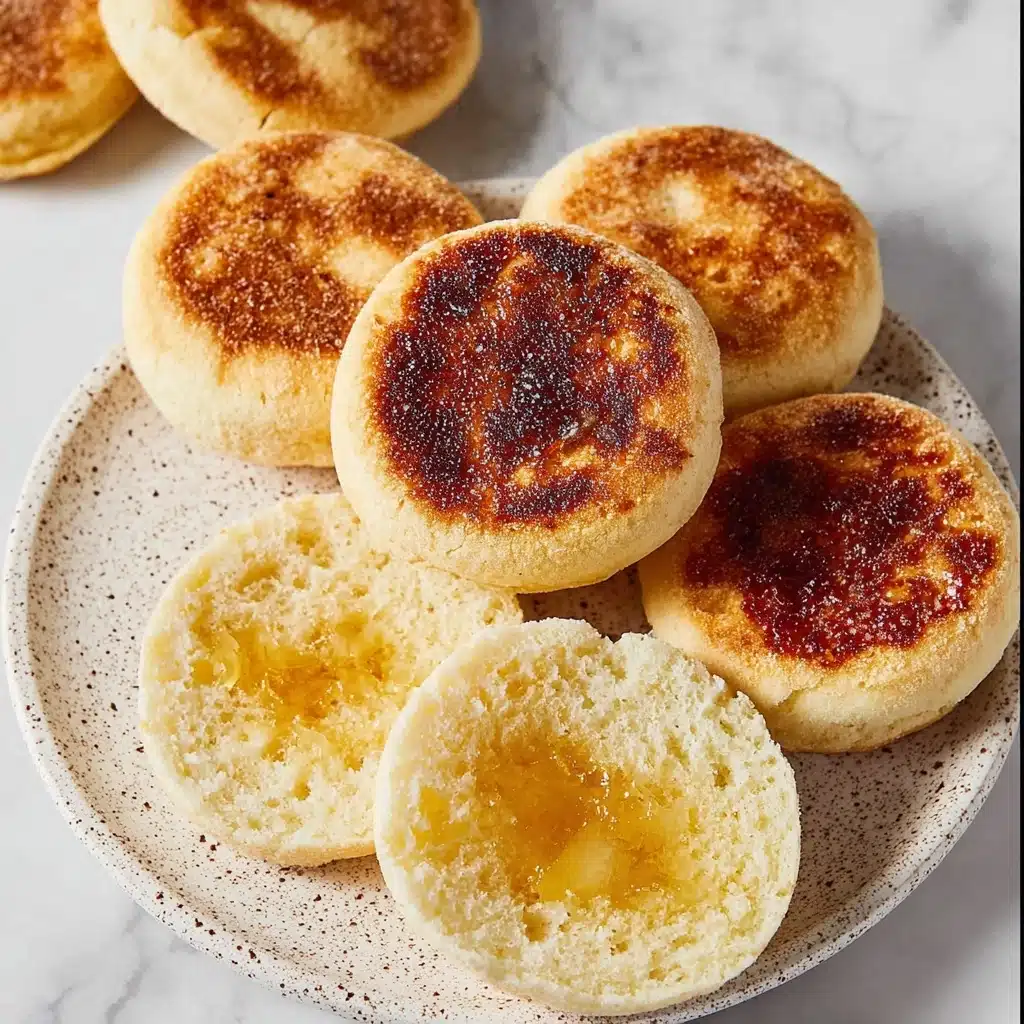
Garnishes
Whether slathered with melting butter, a drizzle of honey, or your favorite jam, garnishes take your muffins from simple to spectacular. Fresh berries or a spread of cream cheese add vibrant flavors and a lush texture contrast that’s simply dreamy.
Side Dishes
Pair your muffins with scrambled eggs, crispy bacon, or even a fresh fruit salad to create a balanced and satisfying meal. The mild flavor and hearty texture of Homemade English Muffins make them an ideal side or base for any breakfast or brunch spread.
Creative Ways to Present
Transform these muffins into mini sandwiches filled with smoked salmon and dill cream cheese, or toast them and top with avocado and a sprinkle of red pepper flakes for a modern twist. They also work beautifully as sliders for a casual get-together, showcasing just how versatile they truly are.
Make Ahead and Storage
Storing Leftovers
Once cooled, keep your leftover muffins in an airtight container at room temperature for up to two days. This maintains their tender crumb while preventing them from drying out too much before you can enjoy them again.
Freezing
If you want to keep these Homemade English Muffins on hand longer, freezing is your friend. Wrap them individually in plastic wrap and then place them into a freezer-safe bag. They’ll keep their freshness and texture for up to three months.
Reheating
To revive frozen or day-old muffins, toast them directly from the freezer or gently warm in an oven at 350°F for about 10 minutes. This restores their fluffy interior and crispy exterior, making every bite as delightful as the first.
FAQs
Can I use all-purpose flour instead of bread flour?
While bread flour is recommended for its higher protein content which creates chewiness, you can use all-purpose flour if needed. Just expect a slightly softer texture and less structure in your Homemade English Muffins.
Why is the dough supposed to be sticky?
The stickiness in the dough is essential to developing the muffin’s signature nooks and crannies. Adding too much flour makes the dough dense and smooth, which loses that ideal texture.
Can I bake Homemade English Muffins instead of cooking them on the griddle?
You can bake them, but the traditional griddle method gives the muffins their unique browned, crisp exterior and chewy interior. Baking may result in a different texture and crust.
How long do these English muffins keep fresh?
At room temperature in an airtight container, they stay fresh for about two days. Beyond that, refrigeration or freezing is best to preserve quality.
Is it necessary to dust the baking sheet with cornmeal?
Absolutely! The cornmeal prevents sticking while adding a subtle crunchy texture that complements the soft crumb, so it’s an important step for true Homemade English Muffins.
Final Thoughts
There’s truly something special about making your own Homemade English Muffins at home. The rhythm of the dough, the aroma filling your kitchen, and that first perfect bite all combine into a comforting experience you’ll want to share again and again. Once you taste these made-from-scratch beauties, you might never go back to store-bought. So go ahead, gather your ingredients, and start crafting your own batch today—you deserve it!
Print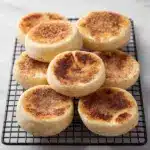
Homemade English Muffins Recipe
- Total Time: 1 hour 50 minutes
- Yield: 16 English muffins 1x
- Diet: Vegetarian
Description
Deliciously soft and fluffy homemade English muffins with the perfect nooks and crannies, made from scratch using active dry yeast, whole milk, and a touch of butter and sugar. These muffins are cooked on a griddle for a golden crust and can be toasted for the perfect breakfast treat.
Ingredients
Yeast Mixture
- 2 1/4 teaspoons active dry yeast
- 1/4 cup warm water
- 1 tablespoon granulated sugar (for proofing)
Main Dough
- 1 1/2 tablespoons granulated sugar (remaining)
- 1 3/4 cups whole milk
- 1 large egg, beaten
- 3 tablespoons salted butter, melted
- 1 1/2 teaspoons salt
- 4 1/2 to 5 cups bread flour
For Cooking
- 1/3 cup cornmeal (for dusting and sprinkling)
Instructions
- Proof the Yeast: Combine active dry yeast, warm water, and 1 tablespoon granulated sugar in a bowl. Stir gently, then set aside for 5 minutes until the mixture is foamy, indicating the yeast is active.
- Prepare the Dough: In a large stand mixer bowl, combine the proofed yeast with whole milk, remaining sugar, beaten egg, melted butter, salt, and 2 cups of bread flour. Beat the ingredients until smooth before gradually adding the remaining flour. Using the dough hook, mix on medium speed for 4-5 minutes until a smooth but very sticky dough forms, which is essential for the desired texture.
- First Rise: Transfer the dough to a large greased bowl and cover with plastic wrap sprayed with cooking spray. Place in a warm area and let rise for 1 hour, or until the dough doubles in size.
- Shape the Muffins: Punch down the risen dough and turn it onto a lightly floured surface. Divide into 16 equal portions using a bench scraper. Shape each piece into a ball, then gently pat into discs. Place the discs on two baking sheets sprinkled generously with cornmeal. Sprinkle additional cornmeal on top of each muffin. Cover loosely with a clean dishcloth and let them rise for 30 to 60 minutes until puffy.
- Cook the Muffins: Heat a griddle or large frying pan over low heat. Transfer muffins gently to the hot griddle. Cook for 6 to 7 minutes on each side, or until both sides are golden brown. An instant-read thermometer inserted in the center should read 200°F indicating they are fully cooked.
- Cool and Serve: Remove muffins from the griddle and cool on a wire rack. To split, use the tines of a fork to poke around the edges instead of slicing with a knife; this preserves the nooks and crannies. Toast the muffins until lightly browned and serve warm with your favorite toppings.
Notes
- The dough should be very sticky; resist the urge to add extra flour as this helps create the signature texture.
- Using a digital thermometer ensures perfect doneness at 200°F internal temperature.
- Splitting the muffins with a fork rather than a knife creates better nooks and crannies to hold butter and jam.
- Cornmeal on baking sheets prevents sticking and adds a slight crunch to the muffin bottoms.
- If you don’t have bread flour, all-purpose flour can be used but the texture might be slightly different.
- Prep Time: 20 minutes
- Cook Time: 20 minutes
- Category: Breakfast, Brunch
- Method: Proofing, Mixing, Rising, Griddle Cooking
- Cuisine: British, American
Nutrition
- Serving Size: 1 English muffin (approx. 70g)
- Calories: 160 kcal
- Sugar: 3.5 g
- Sodium: 230 mg
- Fat: 4.5 g
- Saturated Fat: 2.7 g
- Unsaturated Fat: 1.5 g
- Trans Fat: 0 g
- Carbohydrates: 26 g
- Fiber: 1.2 g
- Protein: 6 g
- Cholesterol: 35 mg
Keywords: English muffins, homemade English muffins, breakfast muffins, griddle muffins, soft muffins, nooks and crannies, yeast muffins

